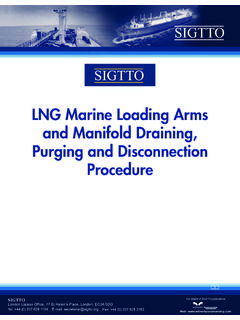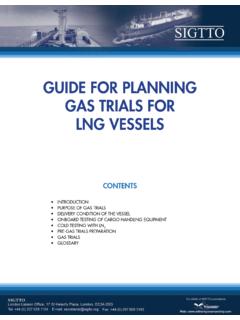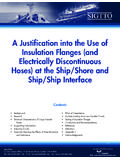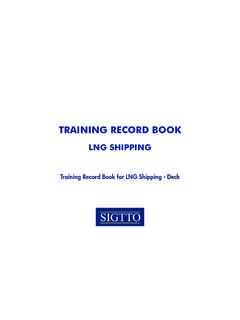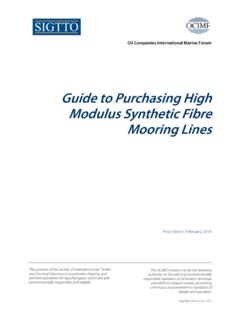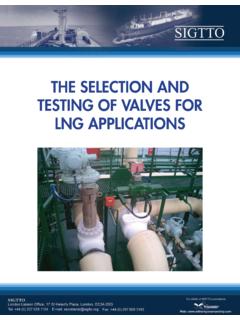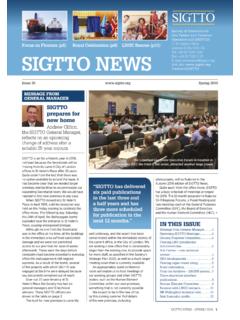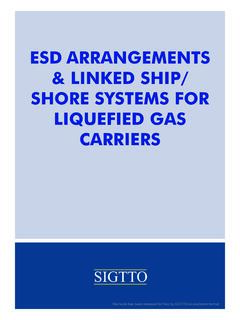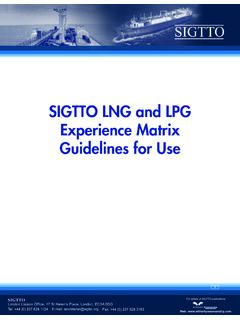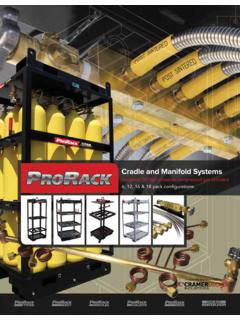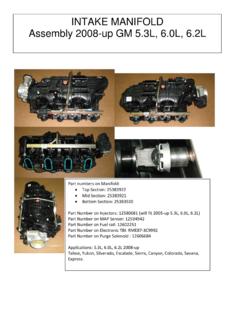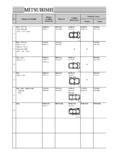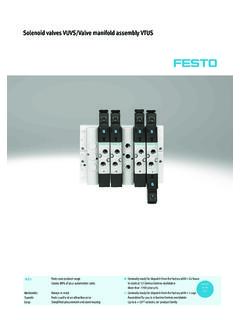Transcription of LNG Manifold Drip Trays - SIGTTO
1 LNG Manifold drip Trays It has come to the notice of the SIGTTO Secretariat that some operators seem to think that it is a requirement/good idea to keep water in the bottom of LNG Manifold drip Trays during cargo transfers. The reasoning behind this is not clear, but the Secretariat has received a few queries on this and hence sees the need to clarify the situation. The following points should be noted. 1) Water in the drip tray will accelerate evaporation of spilt LNG. It is debatable as to whether increasing evaporation rate is a good idea since it will result in a larger flammable gas cloud, , the distance from the spill point to the lower flammable limit (LFL) concentration is increased, although the duration is decreased. 2) Water decreases the capacity of the drip tray to contain spilled LNG.
2 Whilst accepting that the design volume is somewhat arbitrary, reducing it does not seem advantageous. 3) The strongest reason for not introducing water is the risk of Rapid Phase Transition (RPT) activity. RPT is exactly what its name says rapid phase transition, and the effect is rather similar to pouring water into a pan of hot cooking oil. Its result can be explosive, even though there is no combustion. Further description is included in the annex to this message. This risk of RPT is the reason why putting water into Manifold drip Trays is strongly discouraged by SIGTTO . Discussion The Secretariat have had some discussions as to where this idea came from. It has, unfortunately , been picked up by some SIRE Inspectors, who have made comments on their reports to the effect that the Manifold drip Trays should have water in them.
3 The most plausible explanation relates to some membrane ship designs where there is no cargo tank dome structure on deck. Instead, the loading and discharge pipes pass vertically through a stainless steel deck insert. Typically there is then a bend, and, on many vessels a flange, followed by a valve, and another flange connecting to the main liquid pipework. By the time one gets to the second flange, it is over mild steel deck plating. To protect against drips during transient conditions, common practice is to weld a flat bar coaming around the whole area, and fill with water so any drips can t fall directly onto mild steel. This situation is entirely different where the protection is against small drips to that at the Manifold where cubic meter spillage volumes are considered credible.
4 If this reasoning is correct, it would seem to be a case of somebody observing a particular practice, not understanding the reasoning, and applying it in a totally inappropriate manner elsewhere. This advice also applies to LPG ships Manifold drip Trays , even though there is no risk of RPTs, with the sole exception of vessels carrying Ammonia. A small amount of water in the Manifold drip tray will rapidly absorb any small drips. Conclusions SIGTTO recommend that Manifold drip Trays for LNG transfers should be kept as dry as reasonably practical. Water should not be introduced deliberately, or allowed to accumulate in rain. SIGTTO invites all members to review their instructions to ensure that there is nothing there which may imply that putting water into LNG Manifold drip Trays is a requirement.
5 The Secretariat is in contact with the SIRE group at OCIMF with a view to amending their guidance to make clear the recommendations. SIGTTO October 2010 Annex 1 - Rapid Phase Transition (RPT) The objective of this Annex is to give a simplified explanation of an RPT. When a liquid at its saturation temperature is heated slowly, the phase change from liquid to vapour will occur at a steady rate. If the heating is very rapid, owing to a large temperature difference between heat source and liquid, it is possible for the liquid to become meta-stable as a superheated liquid up to a stability limit (for pure methane, atmospheric boiling point C, the thermal stability limit is C). When the limit is reached, the meta-stable condition can no longer be maintained and a rapid phase transition to vapour occurs.
6 The excess energy stored in the liquid is released instantaneously. It is described as a physical explosion or a flameless explosion because no combustion takes place. The energy release rate is orders of magnitude less than if stoichiometric combustion occurs, nevertheless RPTs can still be potentially damaging. The series of photographs below is from large scale tests some years ago (Lorient Tests, photographs courtesy of GDF SUEZ). The programme was designed to simulate failure of a hard arm and spillage quantities were from 1 to 9 m3 at a rate up to 2 300 m/h, so certainly within the credible spectrum of an incident at an LNG ship Manifold . The prediction of RPTs is not precisely understood but the following factors may influence the likelihood. Richer LNG mixtures are more prone to RPT then lean ones, (noting that in the event of a spill, the methane will boil-off preferentially from the LNG, hence the mixture becomes more rich as the event proceeds with time) Physical agitation of the LNG/Water interface promotes RPT activity ( jetting or high rate spillage of LNG into water) RPTs can range from small pops to big bangs; some of the latter from test programs have been estimated to release energy equivalent to 3 4 kg of TNT.
7 Spillage into a drip tray is considered unlikely to lead to a big event simply because the capacity of the heat source (water in the drip tray ) is limited. Nevertheless, small pops can project LNG into the air over the edge of the drip tray and splash onto adjacent unprotected steel structure. It also increases the hazard to any personnel unfortunate enough to be nearby. RPTs are not confined to the LNG industry, they are a known issue in the steel industry with water/molten iron interactions, and in the nuclear industry where they are known as Fuel/Coolant Interactions or FCI. SIGTTO October 2010
